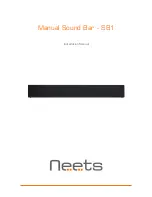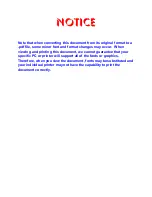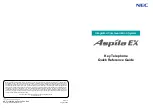
21
7
ROUTINE INSPECTION
Alpha SolarSmart 150 - Routine Inspection/Component Replacement
To ensure efficient operation of the SolarSmart system, it is recommended that it is inspected and checked (by a competent
person) as necessary at regular intervals.
Warning: Before removing any covers or working on the system, isolate the electrical supply.
The data badge for the cylinder is located on the side of the cylinder housing.
Always carry out electrical system checks, i.e. earth continuity, resistance to earth, short circuit and polarity with a
suitable meter, after any electrical work has been carried out on the system.
Check the operation of the system before and after any servicing or replacement of parts.
7.1
IMPORTANT NOTES FOR ROUTINE INSPECTION
1.
Run the system and check the operation.
2.
Ensure that all system connections and fittings are sound.
3.
Open the Solar cylinder's drain valve (Fig. 2, item 24) until the water from the bottom of the cylinder runs clear.
4.
Inspect and clean, if required, the filter and cartridge in the pressure reducing valve and cartridge in the expansion relief
valve fitted to the unvented kit.
5.
Check the operation of the expansion relief valve by turning the head anti-clockwise until it clicks. The click is the valve
lifting off its seat allowing water to escape to the discharge pipe - check that this is happening and that the valve is not
leaking after it has been operated,
6.
Check the charge in the domestic hot water expansion vessel and re-pressurise, if necessary.
Note: Only check the expansion vessel charge when the system pressure is zero.
7.
Record details of the inspection in the Inspection History Section 13.
8
COMPONENT REPLACEMENT
It is recommended that any service work is carried out by a competent person.
Warning: Before removing any covers or working on the system, isolate the electrical supply.
The data badge for the cylinder is located on the side of the cylinder housing.
Always carry out electrical system checks, i.e. earth continuity, resistance to earth, short circuit and polarity with a
suitable meter, after any electrical work has been carried out on the system.
Check the operation of the system before and after any servicing or replacement of parts.
Refer to Section 12 for information on parts and their location.
8.1
DRAIN THE CYLINDER
Isolate the mains water supply and open a hot tap to release the pressure in the cylinder. Attach a hose to the drain valve
located at the bottom of the cylinder and route the hose to a drain. Open the drain valve to drain the cylinder.
8.2
PRESSURE REDUCING VALVE
Isolate the mains water supply and open a hot tap to release the pressure in the cylinder. Undo the two compression nuts
and remove the valve. Fit the new valve, re-tighten the compression nuts and turn on the mains water supply. Open a hot
tap to vent any air from the cylinder.
8.3
EXPANSION RELIEF VALVE
Drain the cylinder as described in Section 8.2. Unscrew the two mains pipe connections and the discharge pipe connection,
then unscrew the valve from the expansion vessel. Fit the new valve in the reverse order using a new washer.
8.4
EXPANSION VESSEL
Drain the cylinder as described in Section 8.2. Loosen the vessel clamp and unscrew the vessel from the expansion
relief valve while holding the valve with a spanner to prevent damaging the mains pipe. Reassemble in reverse order
with a new vessel and washer.
8.5
TEMPERATURE AND PRESSURE RELIEF VALVE
Isolate the electrical supply before removing the casing. Drain the cylinder as described in Section 8.1. Remove the four plastic
pins securing the top cover and remove the cover. Remove the insulation around the valve to expose its connections. Undo
the 15 mm copper discharge pipe from the valve and undo the valve from the cylinder and remove. Unscrew the adapter from
the old valve and fit it to the new one using a suitable joint sealer. Reassemble in reverse order.
For latest prices and delivery to your door visit MyTub Ltd - www.mytub.co.uk - [email protected] 0844 556 1818








































